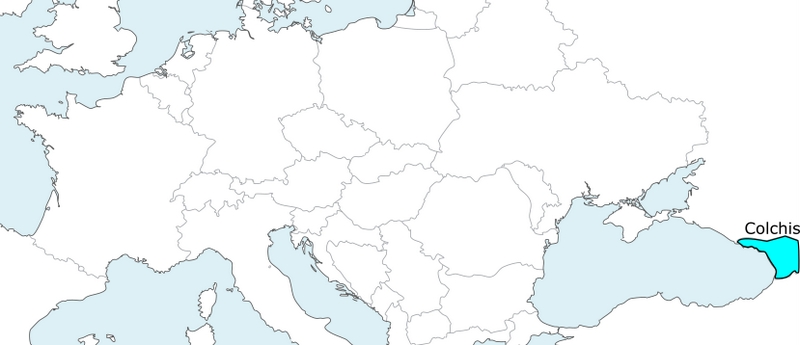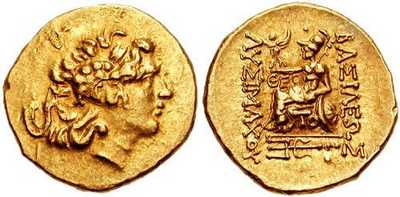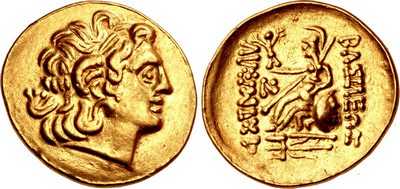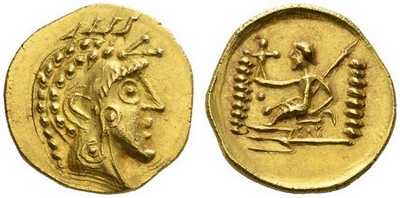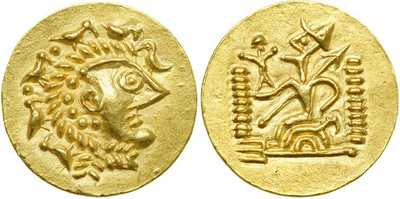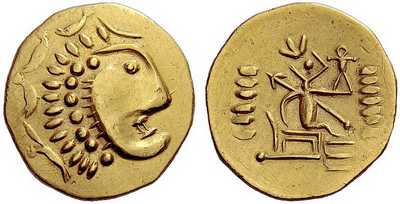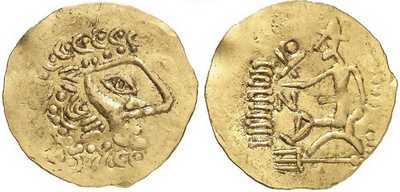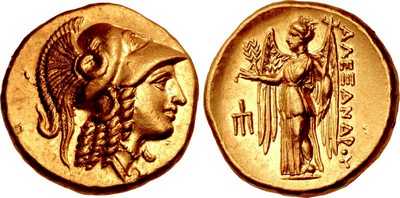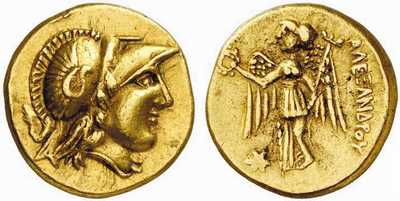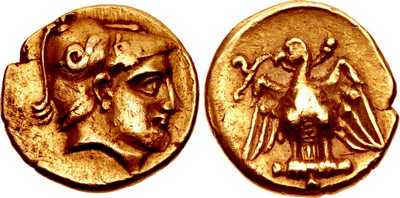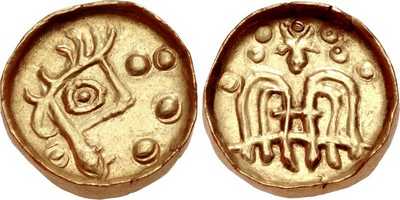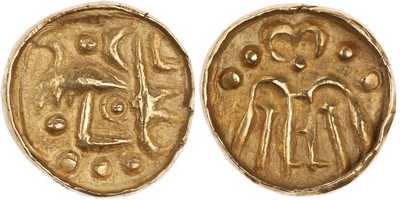| Back to Some Celtic Coins and their Prototypes | This page is part of the article Getting Started with Celtic Coins | Forward to The Eastern Celts |
The Celts in Colchis used two different coins as their inspiration – the gold stater of Lysimachus and the Alexander III gold stater, although it must be noted that there seems to be some uncertainty about the latter.
The Gold Stater of Lysimachus
Lysimachus (or Lysimachos if you are American) was a bodyguard to Alexander III, and became ruler of Thrace after Alexander’s death. He eventually became king of most of Asia Minor. One of the coins he minted, his gold stater, became the standard currency in the Black Sea area, and was still being minted by other kings over a century after his death.
The gold stater of Lysimachus features the head of Alexander on the obverse, and Athena Nikephoros on the reverse (Nikephoros is just Greek for “carrying victory”).
Celtic copies of these coins have been found in many places, including northern Italy, the Balkans, and the Baltic, leading to some debate about where they were actually minted. Originally thought to come from Transylvania, it is now thought that they came from Colchis in modern day Georgia. Brendan Mac Gonagle points out that their geographical distribution “strongly indicates a connection to the Celto-Scythian Bastarnae tribes”. The Bastarnae were close allies of the Pontic king Mithridates VI who minted Lysimachus staters. Mac Gonagle further suggests that the Celts started minting their imitations after Mithridates was defeated by Rome.
Photo Copyright Classical Numismatic Group, LLC
29-OCT-2002, Collection Numismatique d'un Amateur d'Art, Lot 59 (6.29g)
Further Reading
- Georgian imitations to Lysimachus’ type staters
- Metamorphosis In Gold – On Posthumous and Celto-Scythian Staters of the Lysimachus type in Crimea and the Pontic Region
- “Uno Statere Celto-Dacico Dal Vercellese. In: Studia Numismatica Labensia”, Ermanno Arslan
The Gold Stater of Alexander III
The Alexander III gold stater used by the Celts in Colchis has Athena on the obverse and Nike facing left on the reverse. These coins were so popular that they were minted by many rulers long after Alexander III’s death. It was originally thought that these were used as inspiration by the Celts in Central Europe, and coins derived from this stater are still attributed to them in various auctions. However, they are now considered to have been copied in the Colchis area where they then travelled along trade routes to Central Europe. It can’t be ruled out that both sets of Celts copied them.
“The assignation of this remarkable coin type has challenged scholars for many years now. Whereas Paulsen sees the origin of this type in the area of Lake Constance, Kapanadzes puts forth good arguments to peg down the provenance in the eastern region, notably in Colchis (western Georgia) (cp. Kapanadze, Über die ältesten Goldmünzen Grusiens, VDI 1949, S. 156-169). Although some scholars doubt the reports of the occurrence of this coin type in the western region, it nevertheless could be possible that the disturbances of the 1. Century BC and consequent tribal movements, as well as trading aspects could be responsible for the occurrence of such gold staters in the middle-european Celtic world. Flesche supports Vani in West Georgia as minting site.” Ref
Regardless of who actually made them, this is what they looked like:
Further Reading
Article Navigation
| Back to Some Celtic Coins and their Prototypes | Up to Some Celtic Coins and their Prototypes | Forward to The Eastern Celts |
